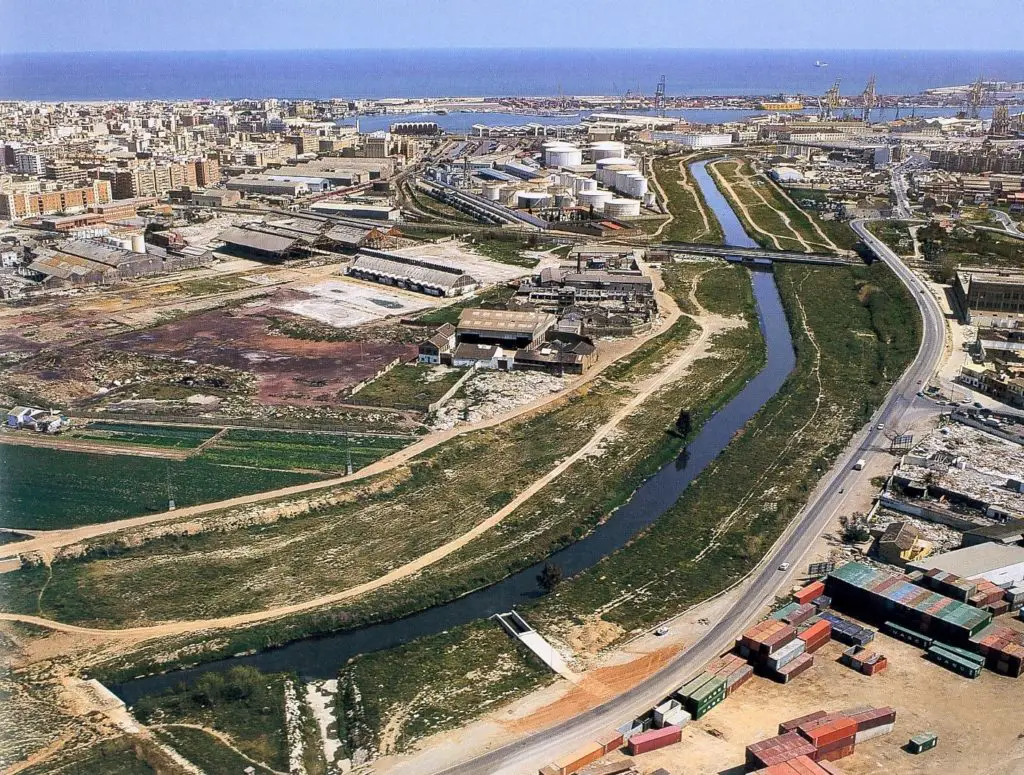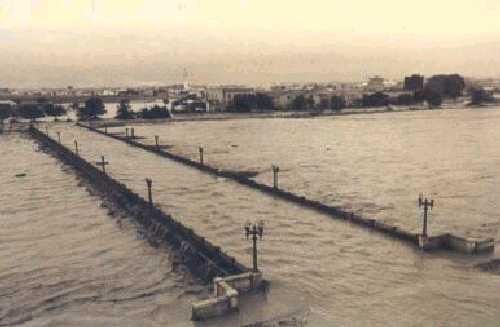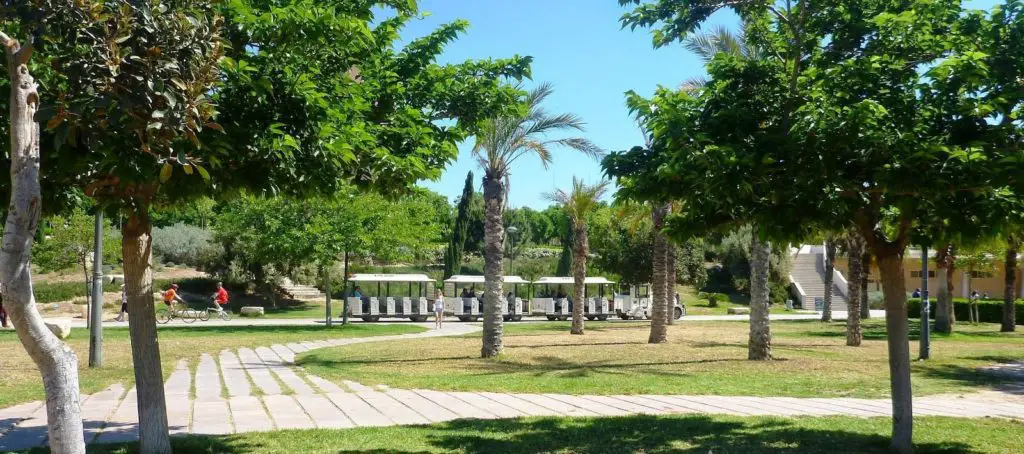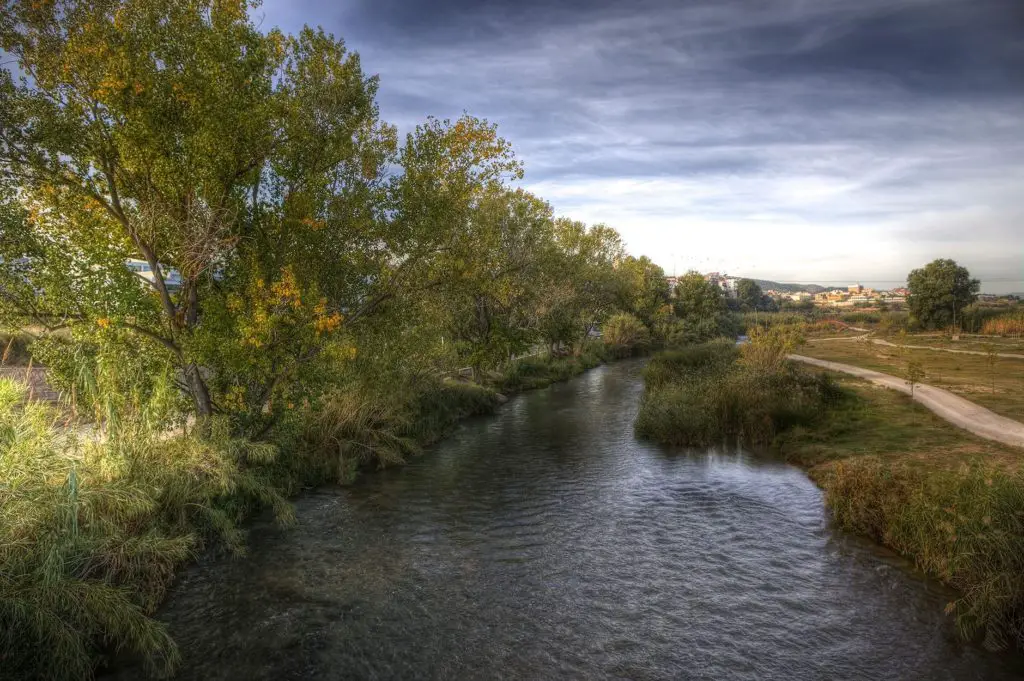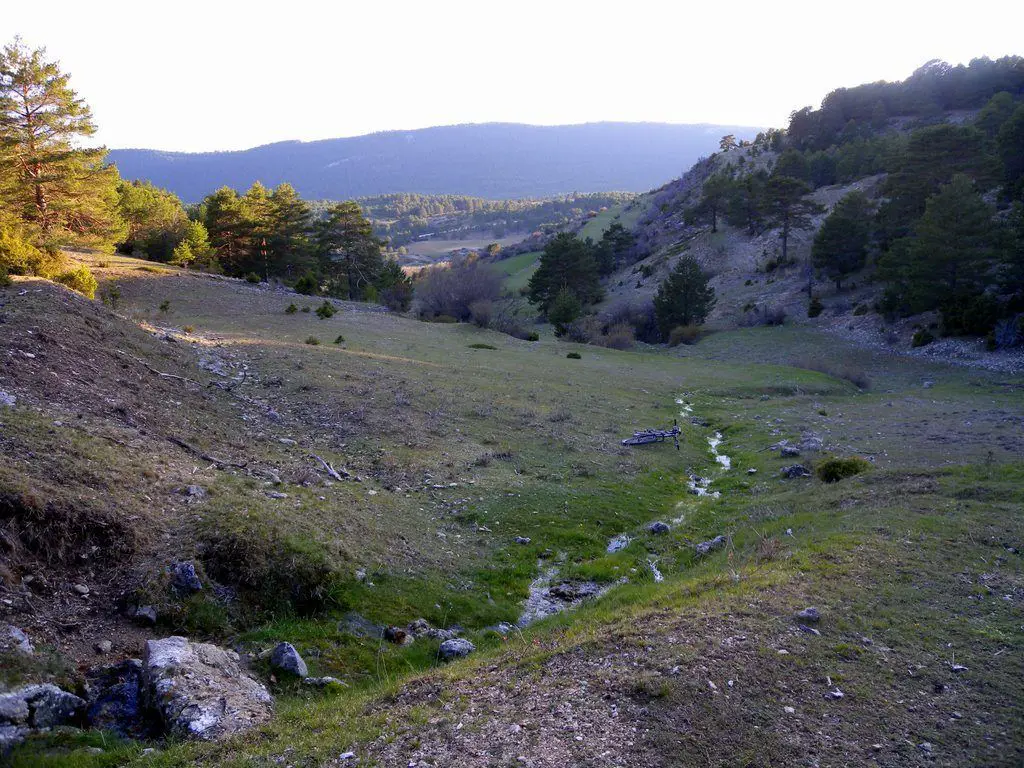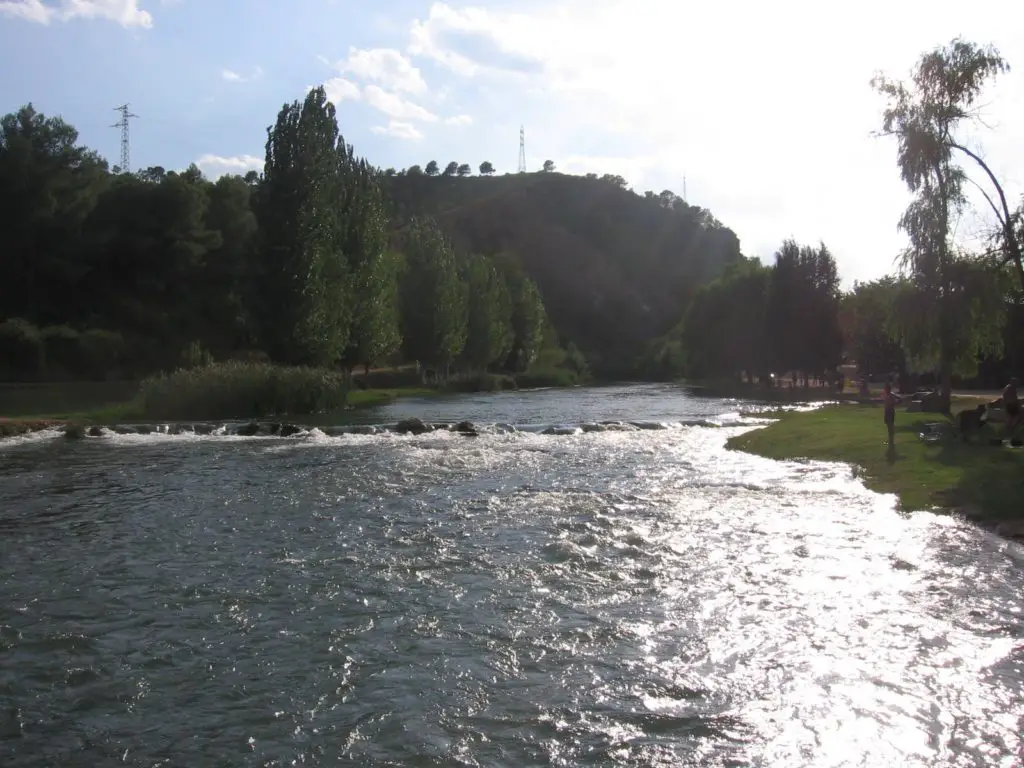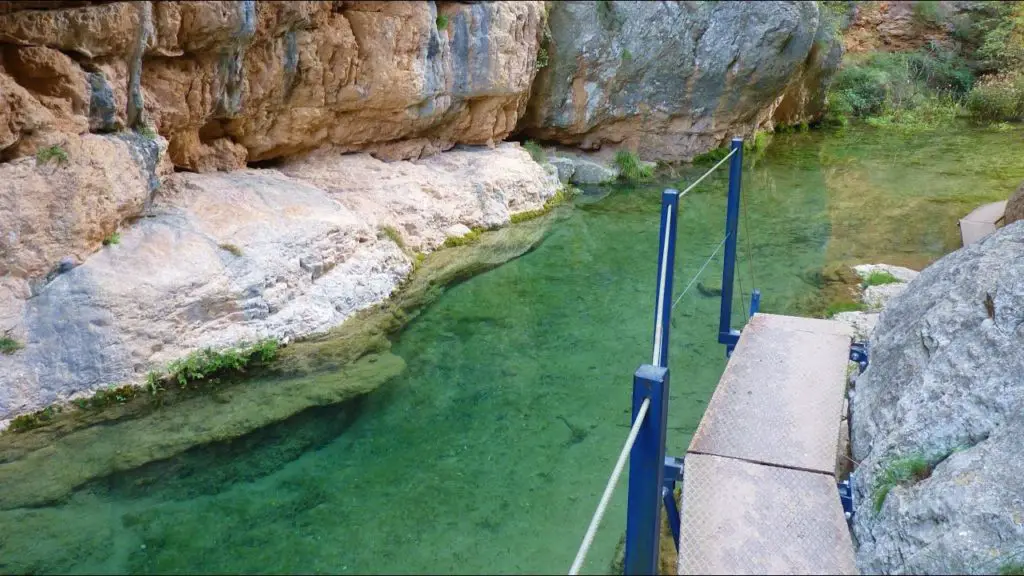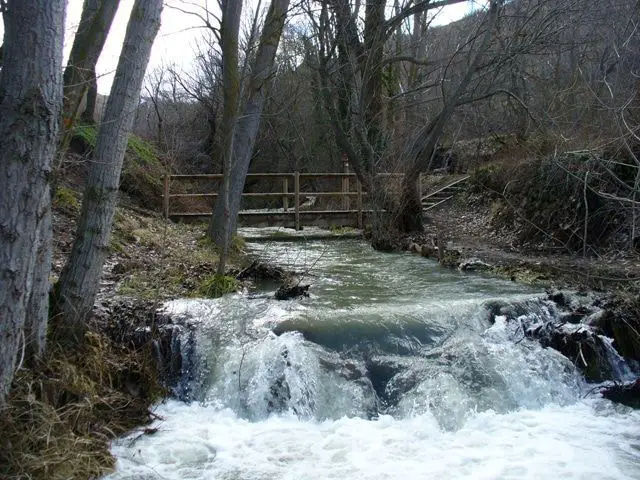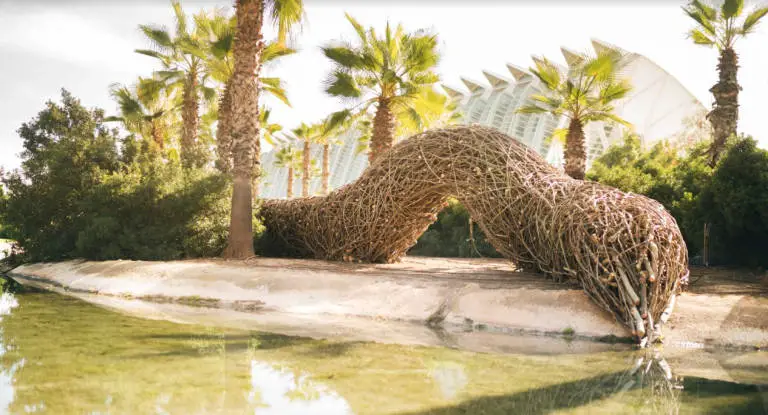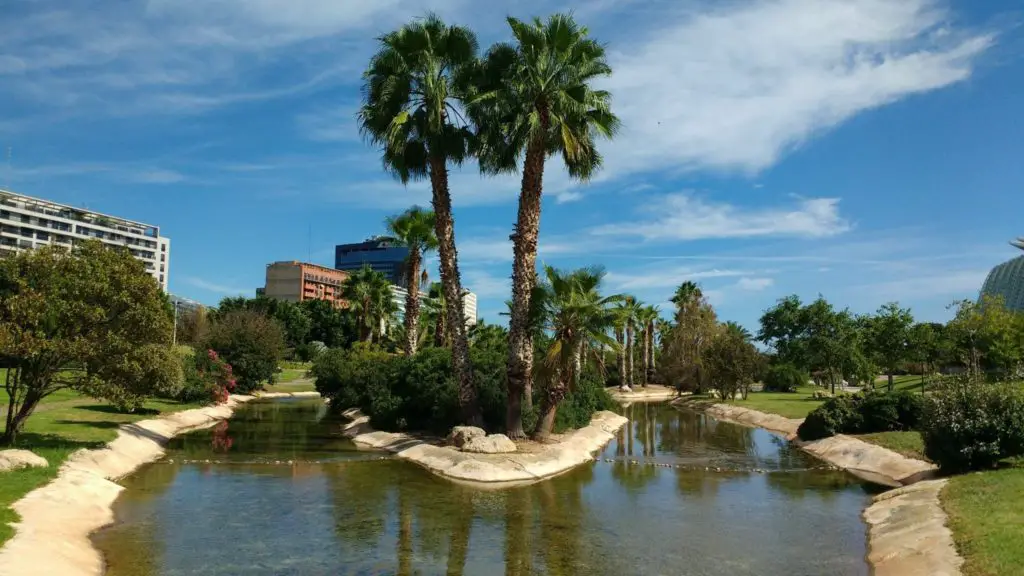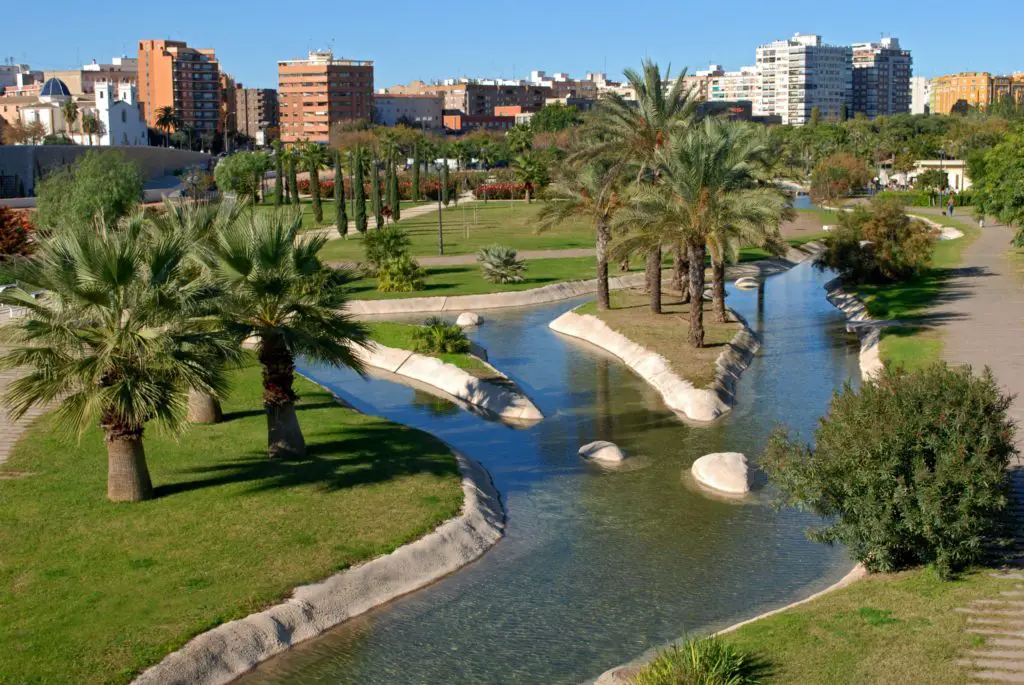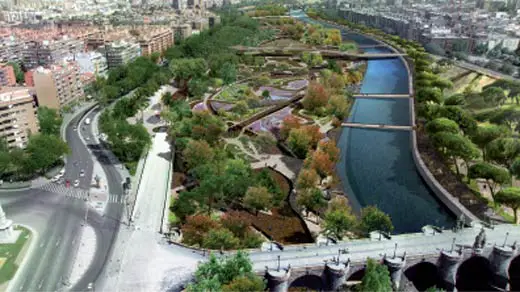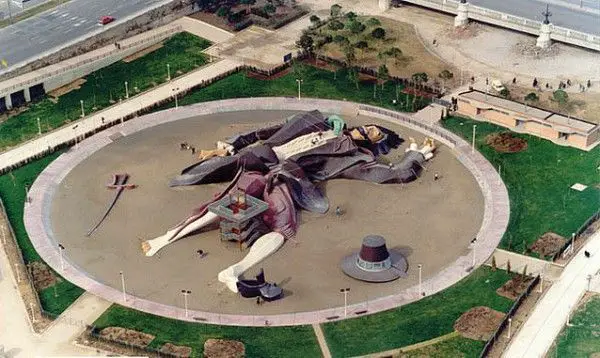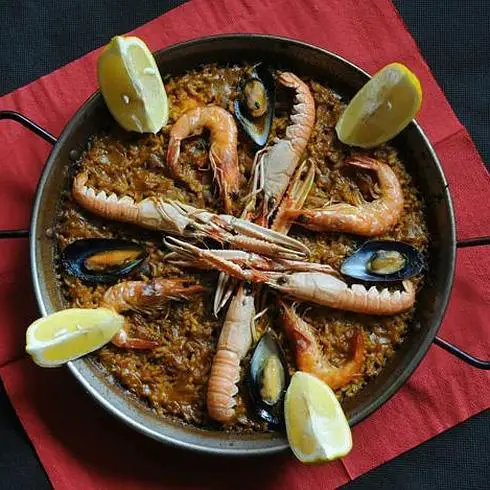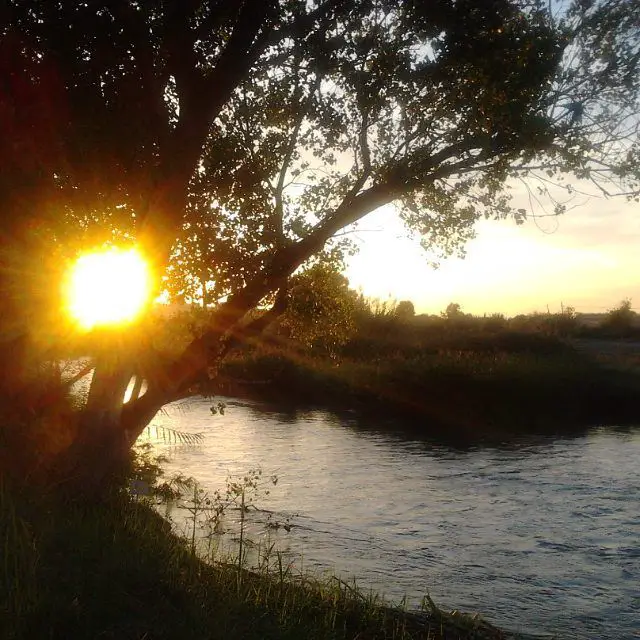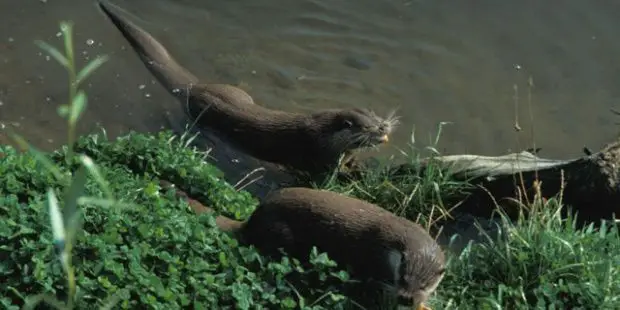Last Updated on September 11, 2023 by Hernan Gimenez
The River Turia is a Spanish river that rises in the Montes Universales, in the northwesternmost mountains of the Sistema Ibérico, in the province of Teruel.
From its source to about the city of Teruel, it is called the River Guadalaviar. The River Turia crosses the provinces of Teruel, Cuenca and Valencia and flows into the Mediterranean Sea near the city of Valencia.
The River Turia is very important as it provides the water for the crops of rice, oranges and olives grown in the region, the River Turia is at the centre of the history of the development of the region of Valencia.
In addition to its agricultural use, the river was diverted in the 1960s to prevent it from flooding the city of Valencia. The former countryside has been turned into a nature reserve with an excellent network of cycle paths.
Indice De Contenido
History of the River Turia
The river is famous for its floods. The flood of 14 October 1957 almost completely submerged the city of Valencia, causing great damage to life and property.
The history of the River Turia in Valencia is notorious for flooding, and to prevent this from happening in the future, a diversion project (Plan Sur de Valencia) was designed and completed in 1969, dividing the river in two at the western edge of the city.
Not unlike the artificial southern diversion channel of the LA River, which is often found south of the city as the primary water flows during periods of flooding.
During normal flows, the water is channelled through irrigation canals to help cultivate the fertile plains of Valencia. Throughout history, the waters of the River Turia in Valencia have been used to irrigate the region.
In modern times, a complex irrigation network has been created, with the main axis centred on the diversion project. In addition to irrigation, these canals also carry run-off and surplus water from the Turia to the wetlands and marshes around Valencia.
Valencia is famous for its open green spaces, but one garden is particularly important to the city. The Turia Garden was created in the dry riverbed of the Turia after a catastrophic flood in 1957 caused the authorities to divide the river and send it on a new course.
It still stretches from the mountains to the sea, but where it meets the city of Valencia, it borders the livelihoods it threatened nearly sixty years ago.
Covering 120 hectares of dry riverbed, the centre of the park is a lush garden divided into twelve sections, with native and exotic Spanish plants and animals, ponds and a Zen garden designed by Ricardo Bofill.
A real park for the people, it also has an athletics track, works of art, climbing walls, football pitches, cafes, ponds and flowers. Traffic is diverted across the 11km of the park by bridges at various intervals.
Children can explore Gulliver Park, an adventure playground with a large fibreglass model of Gulliver tied to the ground by ropes. Children can climb the ropes and retell the story. Gulliver’s clothes form a network of slides and ladders.
At the eastern end of the garden are the City of Arts and Sciences and the Palau de la Música de Valencia. The latter, the Palau de la Música, has a more traditional garden to enjoy along with the architecture of the building.
Characteristics of the River Turia
The Turia is one of the longest rivers in Spain (along with the Ebro, Tajo and Guadiana) and has several special features. Its natural environment is one of the richest and most varied in terms of flora and fauna in Europe.
Its irrigation capacity, especially on its wide and fertile plain, supports Andalusia’s rich agriculture, and engineering improvements have helped industrialise the towns along its course.
The River Turia rises nearly 5,250 feet (1,600 metres) above sea level in the southern province of Jaén, north of the Sierra Nevada mountain range facing the Mediterranean Sea. It then flows north for about 30 miles (48 km) through a narrow valley.
After emerging at the Muela de San Juan, it follows a westward and southwestward trend for the rest of its course. Between the towns of Andújar and Montoro, the river crosses a widening plain.
After passing the city of Cordoba, the Turia irrigates the fertile regions of Posadas and Lora del Rio before reaching Seville. From there the river meanders lazily across a hot coastal plain, crossing the marshes of Las Marismas, the largest in Spain, before reaching its mouth in the Mediterranean.
The Turia basin contains one of the greatest floral resources in Europe, with representatives of half of the continent’s plant species and almost all those of the North African region.
The surrounding mountains are largely covered by pine and oak forests, but more than a third of the total area is covered by olive groves. Cereals (wheat and barley) and vines are also important.
Source and course of the River Turia
The River Turia has its source in the San Juan millstone, in the municipality of Guadalaviar, near the Montes Universales, Sierra de Albarracín (Teruel), and flows 280 kilometres to the city of Valencia.
Turia riverbed
The old course of the River Turia was split in two at the western boundary of the city. During floods, most of the water is diverted south along a new course that skirts the city until it meets the Mediterranean.
The former course of the River Turia has become a central green space for the city, a cultural attraction known as the Turia Garden.
Similar to the artificial southern diversion channel of the LA River, it is often found to the south of the city as the main watercourses flow during periods of flooding.
During normal flows, the water is channelled through irrigation canals to help cultivate the fertile plains of Valencia. Throughout history, the waters of the River Turia have been used to irrigate the region, as mentioned above.
In modern times, a complex irrigation network has been created, with the main axis centred on the diversion project. In addition to irrigation, these canals also carry run-off and surplus water from the River Turia to the wetlands and marshes around Valencia.
Tributaries of the River Turia
Among the tributaries of the River Turia we have the following rivers on its sides:
- Right: Ebrón.
- Left: Camarena.
The source of the river Ebrón is in Fontibre (Cantabria), from the Latin Fontes Iberis, source of the Ebro. Nearby is the large artificial lake, the Embalse del Ebro, created by damming the river.
The upper Ebrón flows through rocky gorges in the province of Burgos. When it reaches Navarre and La Rioja, it begins to form a wide limestone valley, thanks to the many tributaries that flow from the Sistema Ibérico on the one hand, and the mountains of Navarre and the western Pyrenees on the other.
There, the climate (the valley is isolated from marine air masses by the surrounding mountains) becomes increasingly continental, with more extreme temperatures and drier characteristics, and therefore typically hot (sometimes very hot) and dry summers, very similar to summers in arid and semi-arid climates.
The geological processes of karst formed the landscape from soluble carbonate rock layers of extensive calcareous rock formed on an ancient seabed. Aragonite, a mineral named after Aragon, is evidence of the abundance of carbonates in the central Ebron valley.
The valley widens and the flow of the Ebrón slows down as its volume of water increases, flowing through Aragón. There, major tributaries from the central Pyrenees and the Iberian system discharge large amounts of water, especially in spring when the mountain snow melts.
By the time it reaches Zaragoza, the Ebrón is already a large river. There, the basilica of Nuestra Señora del Pilar stands beside the Ebrón. The soils of most of the valley are poor: calcareous, stony and sometimes saline, with endorheic saline lagoons.
The semi-arid interior of the Ebrón Valley has dry summers and a semi-desert climate with rainfall between 400 and 600 millimetres (16 and 24 inches), peaking in autumn and spring (see articles: Snake River).
It is covered by chaparral vegetation. Summers are hot and winters cold. The dry summer season has temperatures above 35°C (95°F), occasionally reaching over 40°C (104°F).
In winter, temperatures often drop below 0°C (32°F). In some areas, vegetation depends heavily on moisture from condensation fog. It is a continental Mediterranean climate with extremes of temperature. There are frequent frosts on clear nights and sporadic snowfalls.
Camarena River
The fauna in the vicinity of the river is rich and varied, with both European and North African species. In the artificial lakes of Entrepeñas and Buendía you can fish for royal carp, bream and perch, while in the Tagus and its tributaries you can catch trout, barbel and many other species.
Big game can be hunted in Gredos, famous for its Pyrenean or Spanish ibex, while fallow deer and chamois can be found in the Cuenca mountain ranges.
Map of the River Turia
Below is a map of the River Turia, showing its source, course, mouth and exact location.
There is also a map of the course of the River Turia, where we can see where the river flows all the way to its mouth in the Mediterranean.
Economy
Bold ideas are easy, implementing them is hard. This is particularly true as cities around the world look to use their landscape infrastructure to address the problems they face.
How can interventions be woven into the existing urban fabric? Beyond simply marshalling financial resources or political will, it is necessary to look for ways to carefully insert or adapt landscape systems within the constraints of established urban communities.
New York’s High Line, Atlanta’s Beltline and Madrid’s RIO project used abandoned or replaced railway or motorway infrastructure to create linear landscapes through the heart of older cities.
Valencia, for its part, was built on crisis and, in the words of Rahm Emanuel, “you never want a serious crisis to go to waste”. In 1957, Valencia experienced a devastating flood that forever changed the city’s relationship with the River Turia.
The ambitious plan, known as the “Plan Sur”, was completed in 1969. Although the new canal was a missed opportunity for innovative construction, the remains of the old riverbed became an opportunity to create the network of landscapes that became the Turia Gardens of today.
A park was not the first idea of the city’s leaders: in an effort to alleviate traffic congestion, they envisioned an elaborate system of roads through the heart of the city.
In 1970, however, citizens protested against the road proposal, shouting “The Turia riverbed is ours and we want it green! Towards the end of the decade, the city passed a law to turn the bed into a park, and in 1982 commissioned Ricard Bofill to draw up a master plan.
The plan created a framework for the riverbed and divided it into 18 zones. Today, all but one of these zones have been developed.
The resulting design creates a monumental five-mile greenbelt within a dense and diverse urban fabric, including the city’s historic downtown, and averages 600 feet in length from bank to bank (see article: Yukon River).
The park covers more than 450 acres and features bike paths, event spaces, active recreation areas, fountains and many notable structures, including Santiago Calatrava’s Alameda Bridge.
Each section has its own design style, from Ricardo Bofill’s formal gardens with modern touches, built in 1986, to Calatrava’s biomorphic City of Arts and Sciences, completed in 1998.
To the sinuous geographical features of the Header Park by Eduardo de Miguel Rabones, Blake Muñoz Criado and Vicente Corell Farinós, completed in 2004. The last area, which connects the park to the Mediterranean Sea and the marina, was designed by Tomas Llavador Architects.
The Turia River Garden
While the clumsy design of the Turia River Garden may be problematic, the project is a fascinating modern example of the transformative effect of landscape infrastructure on a city’s identity and well-being (see article: Tocantins River).
Born out of crisis, Valencia has managed to integrate a network of leisure and transport infrastructure with its historic centre and surrounding neighbourhoods. It is now hard to imagine Valencia without its green river.
The Turia Garden is one of the largest urban parks in Spain. It runs through the city along nine kilometres of green space, with walking paths, leisure and sports areas and romantic places to relax.
Crossed by 18 historic bridges, the old riverbed passes by the city’s main museums and monuments on both banks.
The extensive gardens are built on the old bed of the River Turia, which was diverted to prevent the city from being constantly flooded. After a devastating flood on 14 October 1957 (see article: Mississippi River).
The course of the River Turia was diverted to the south of the city, leaving a large area that crosses the city from west to east, bordering the historic centre. Several town planners and landscape designers designed different sections of the park, recreating the landscape of the former river.
They created a unique itinerary of palm and orange trees, fountains and pine groves, aromatic plants and ponds, sports facilities and rose bushes. The gardens were inaugurated in 1986. Cabecera Park and the Bioparc border the vast gardens to the west, and the futuristic City of Arts and Sciences borders them on the opposite side, near the mouth of the river.
The city has created a space that brings together its inhabitants and visitors from all over the world. The park’s accessibility and economic impact are enhanced by its linear form, which maximises its edges.
Despite the apparent success of the Plan Sur in preventing flooding, the long-term impact of the diversion of the River Turia is unknown: in the same circumstances today, would we consider such acute changes to a region’s hydrology?
As the development of Valencia encroaches on the canalised river (Nuevo Cauce del Turia) and incorporates the waterway into its new urban fabric, it becomes increasingly important to rethink this past solution.
The canal offers a second opportunity to rectify and build on the legacy of the Turia Garden by encapsulating the parallel roads and restoring the river’s natural systems.
This new intervention could provide an even larger linear park system that further connects the city and transforms its western edge, while maintaining the necessary flood control function (see article: San Lorenzo River).
Features of the Turia River Garden
The Turia Gardens link a realistic African savannah in the Bioparc with the underwater world and ecosystems that can be visited in the Oceanográfic, and the spectacular Opera House and the Palace of Arts in the City of Arts and Sciences.
There are many other interesting stops along the way. In the huge Gulliver’s Park, children can climb on the fingers, hair and legs of a 70-metre-high giant and slide down like Lilliputians.
Nearby is the Palais de la Musique, which offers a full programme throughout the year. The wide esplanades in front of the palace offer space for children to skate and play football. Small swan-shaped boats can be hired in Cabecera Park.
In the ponds around the City of Arts and Sciences, canoes and bocce balls can be hired in the summer. Valencia is a flat city, so the Turia Gardens are the perfect place for running enthusiasts and those who prefer cycling (see article: Rio Columbia).
These small vehicles can be hired in the gardens. Along the way, there are many bars and cafés with large terraces where you can take a break and refresh yourself. The Turia Gardens are crossed by 18 bridges from different periods and architectural styles.
The most outstanding historic bridges are San José (17th century), Serranos (16th century), Trinidad (15th century), El Real (16th century) and El Mar (16th century).
The old riverbed also connects other points in Valencia that are not to be missed, such as the Serranos towers, located on the old walls that surrounded Valencia.
Now converted into a wonderful viewpoint over the historic centre and the gardens, the Museum of Fine Arts. All of this is located on the old banks of the River Turia, which serves as a guide for an interesting cultural itinerary in the city of Valencia.
Gastronomy
One of the most enjoyable parts of any trip is discovering the local gastronomy, and Valencia has a lot to offer in this respect. In this review of some of the best restaurants in the city, we offer tips on how to get the most out of your trip to Valencia.
The most important dish here is rice, and you can’t leave Valencia until you’ve tried it. There is a wide range of recipes from paella to baked rice, rice with seafood, duck, lobster, mushrooms, black rice and many more.
There is a rice dish to suit every taste and a wide variety of restaurants to choose from. On the river, in the city centre and outside the city in El Saler, our restaurant guide includes a selection of the best quality restaurants to try authentic Valencian rice dishes.
In the Albufera Natural Park, the home of paella, you’ll find restaurants such as El Palmar, which also offers boat trips, while in the surrounding countryside you’ll find country houses such as La Barraca de Toni Montoliu, where you can take a trip in a horse-drawn carriage.
As well as rice dishes, food lovers will find a whole range of innovative culinary creations in Valencia. The culinary revolution that has taken place in the city in recent years is reflected in its typical Mediterranean cuisine. The quality of Valencia’s restaurants is undeniable (see article: Río Caqueta).
Finally, for those who want to try seasonal Valencian dishes at the best price, we recommend VLC Menú, which offers the unique opportunity to enjoy a set menu of typical Mediterranean dishes at a reasonable price in around twenty restaurants around the city.
The climate
Spain’s water resources depend entirely on the different climates that exist in each area. Some areas have an Atlantic climate with heavy rainfall, fairly evenly distributed throughout the year, sometimes exceeding 500-600 mm and sometimes reaching 1,500 mm.
These areas form what is known as humid Spain, which occupies about 10 per cent of the peninsula. Almost all of the rest of the peninsula has a very different climate, with annual rainfall of less than 500-600 mm, unevenly distributed throughout the year, forming what is known as dry Spain.
There are also areas of mountain climate with abundant rainfall, much of which eventually flows into the rivers of Dry Spain, which will act as an important resource.
The fauna
The fauna is as varied as the flora, with animals representing a wide variety of European and North African species. Wild boar, goats, fallow deer, chamois, partridge and many other animals can be found in the mountains (see article: San Francisco River).
This makes the area one of the great European hunting grounds. Fish, mainly trout and barbel, can be found throughout the Turia, its reservoirs and its tributaries.

